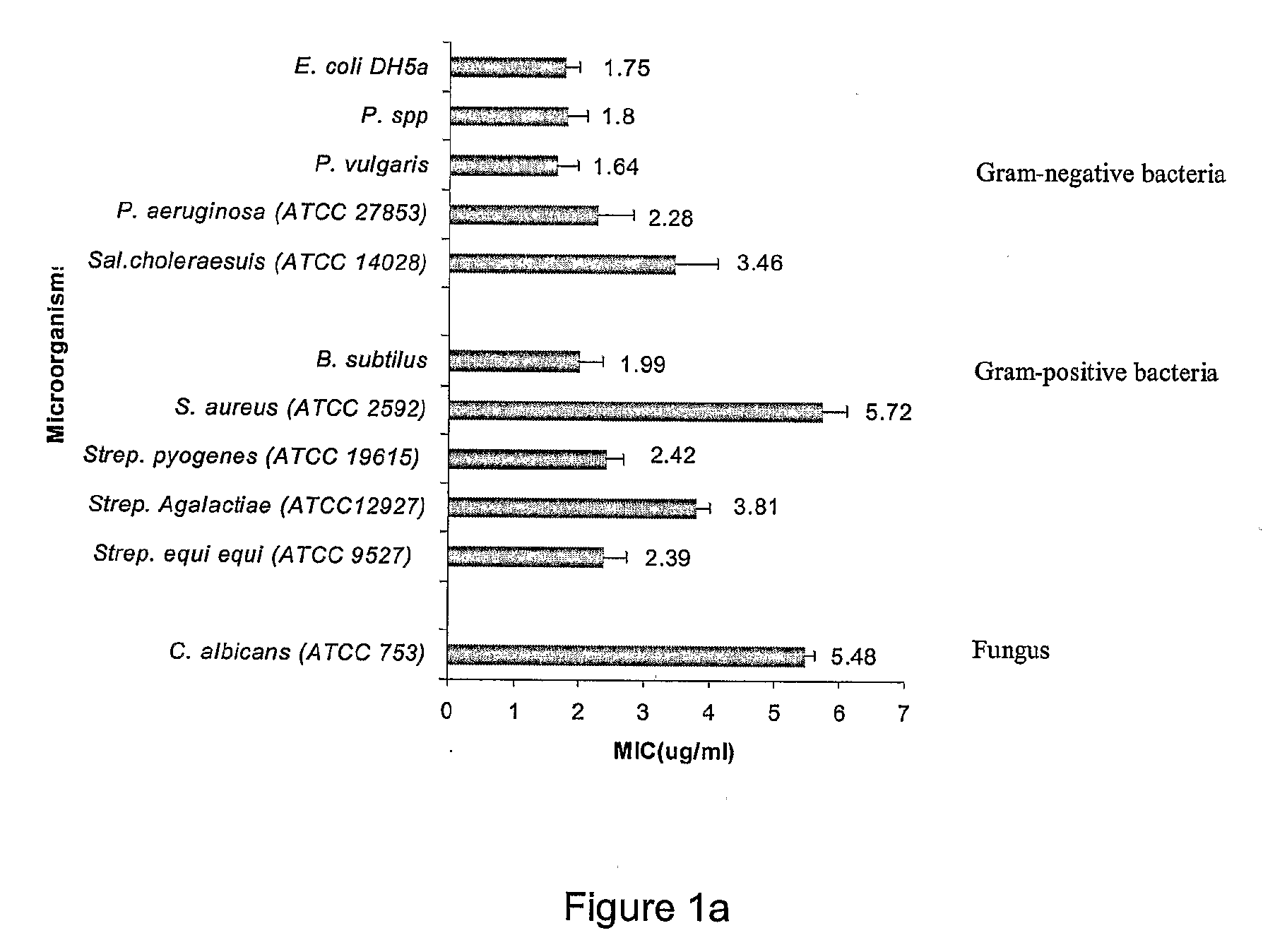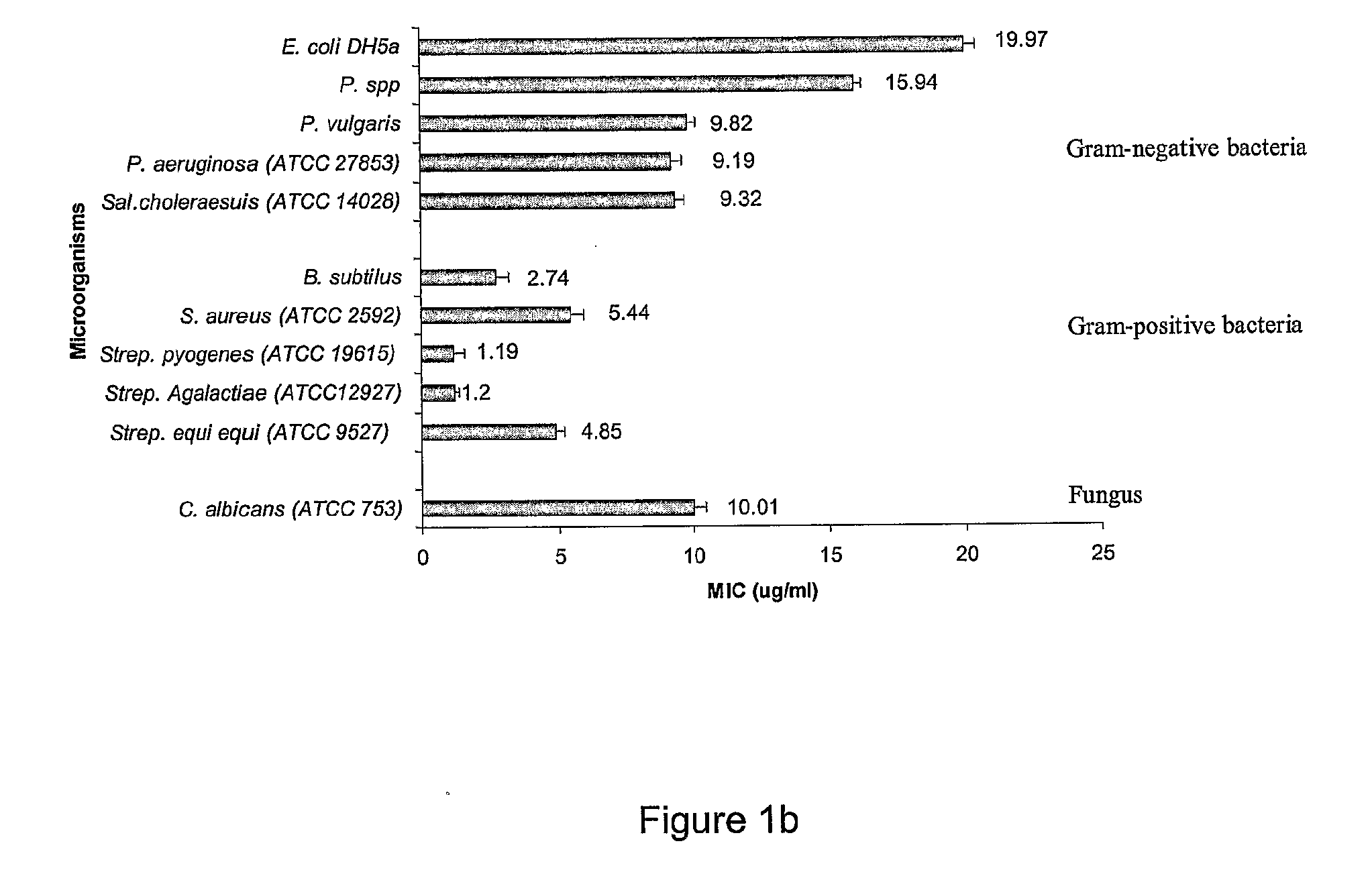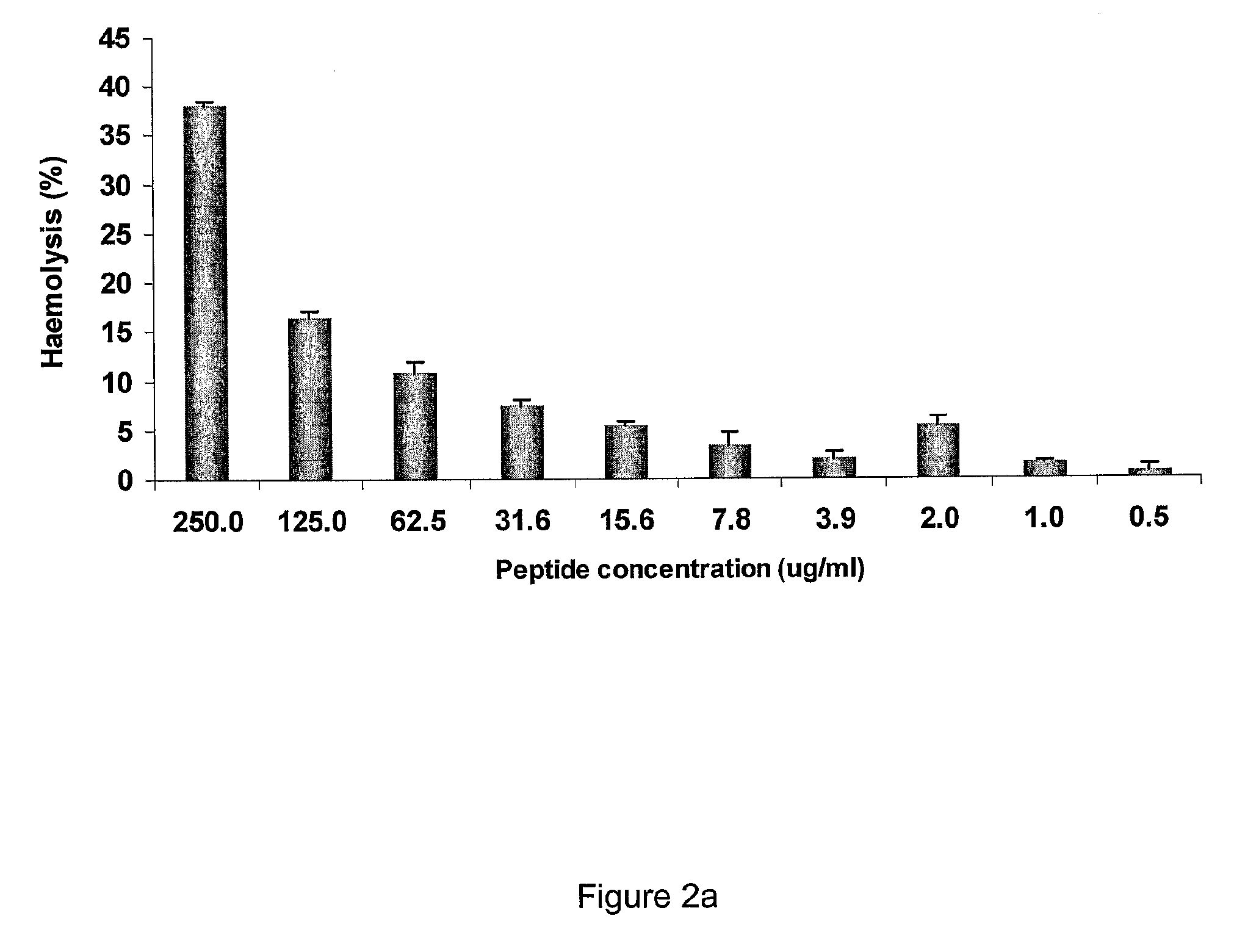Antimicrobial protein
- Summary
- Abstract
- Description
- Claims
- Application Information
AI Technical Summary
Benefits of technology
Problems solved by technology
Method used
Image
Examples
example 1
Antimicrobial Activity of Peptides
[0302]Synthetic Peptides
[0303]Three amidated peptides were commercially synthesized by Auspep. The sequences of the peptides are as follows:
(SEQ ID NO: 2)KRGFGKKLRKRLKKFRNSIKKRLKNFNVVIPIPLP-NH2;(SEQ ID NO: 19)KRGLWESLKRKATKLGDDIRNTLRNFKIKFPVPRQ-NH2;and(SEQ ID NO: 31)RKKGSKRHKPGSYSVIALGKPGVKKSPYMEAL-NH2.
[0304]Antimicrobial Assays
[0305]Peptides were tested for antimicrobial activity against Escherichia coli DH5α, Escherichia coli DH5α comprising an ampicillin resistant gene, Pseudomonas spp., Pseudomonas vulgaris, Proteus vulgaris, Pseudomonas aeruginosa (ATCC 27853), Salmonella choleraesuis (ATCC 14028), Bacillus subtilis, Staphylococcus aureus (ATCC 25923), Streptococcus pyogenes (ATCC 19615), Streptococcus Agalactiae (ATCC 12927), Streptococcus equi equi (β-Haemolytic streptococcus) (ATCC 9527), and the yeast Candida albicans (ATCC753), by a two stage radial diffusion assay essentially as described in Steinberg and Lehrer, Methods Mol. Biol., 78: 1...
example 2
Antimicrobial Peptides Have Low Toxicity to Mammalian Cells
[0312]Methods
[0313]The toxicity of the antimicrobial peptides was determined using a haemolytic assay. In particular, the hemolytic activity of the peptides was determined using tammar wallaby erythrocytes. Fresh erythrocytes were harvested from heparinized blood taken from a tammar wallaby. Erythrocytes were harvested by centrifugation for 3 min at 3000 g. Erythrocytes were then washed three times with PBS (pH 7.4) until the supernatant was essentially colourless. 20 μl two fold serial dilutions of the peptide were mixed with the same volume of erythrocytes in solution 2%) in PBS of each well of a 96-plate. 80μl PBS was added to each well after the plate was incubated at 37° C. for one hour. Plates were then centrifuged at 3000 g for 5 min. 90 μl of the resulting supernatant was transferred to a flat-bottom microtiter plate and haemoglobin release was monitored by measuring the absorbance at 414 nm with an ELISA plate reade...
example 3
Efficacy of Antimicrobial Peptides against Multidrug-Resistant Bacterial Isolates
[0316]Methods
[0317]The MIC values of SEQ ID NO: 2 and SEQ ID NO: 19 were also determined against a range of multidrug-resistant isolates, including clinical and laboratory strains. Peptides, maintained at −20° C. in solid form for storage purposes, were subsequently dissolved in 0.01% (v / v) acetic acid (Sigma-Aldrich) to a stock concentration of 0.64 mg / L. The stock solutions were made fresh for each experiment. Eighteen (18) bacterial isolates obtained from the Facility for Anti-Infective Drug Development and Innovation, Victoria, Australia (FADDI) as listed in Table 2 were maintained as stock cultures in Tryptic Soya Broth plus 20% (v / v) glycerol at a temperature of −80° C., and subcultured onto Nutrient Agar for each experiment. MIC values were determined in cation-adjusted Mueller-Hinton broth (CAMHB) and Mueller-Hinton broth (MHB) using standard broth micro-dilution methods. Experiments were conduc...
PUM
| Property | Measurement | Unit |
|---|---|---|
| Mass | aaaaa | aaaaa |
| Mass | aaaaa | aaaaa |
| Mass | aaaaa | aaaaa |
Abstract
Description
Claims
Application Information
 Login to View More
Login to View More - R&D
- Intellectual Property
- Life Sciences
- Materials
- Tech Scout
- Unparalleled Data Quality
- Higher Quality Content
- 60% Fewer Hallucinations
Browse by: Latest US Patents, China's latest patents, Technical Efficacy Thesaurus, Application Domain, Technology Topic, Popular Technical Reports.
© 2025 PatSnap. All rights reserved.Legal|Privacy policy|Modern Slavery Act Transparency Statement|Sitemap|About US| Contact US: help@patsnap.com



